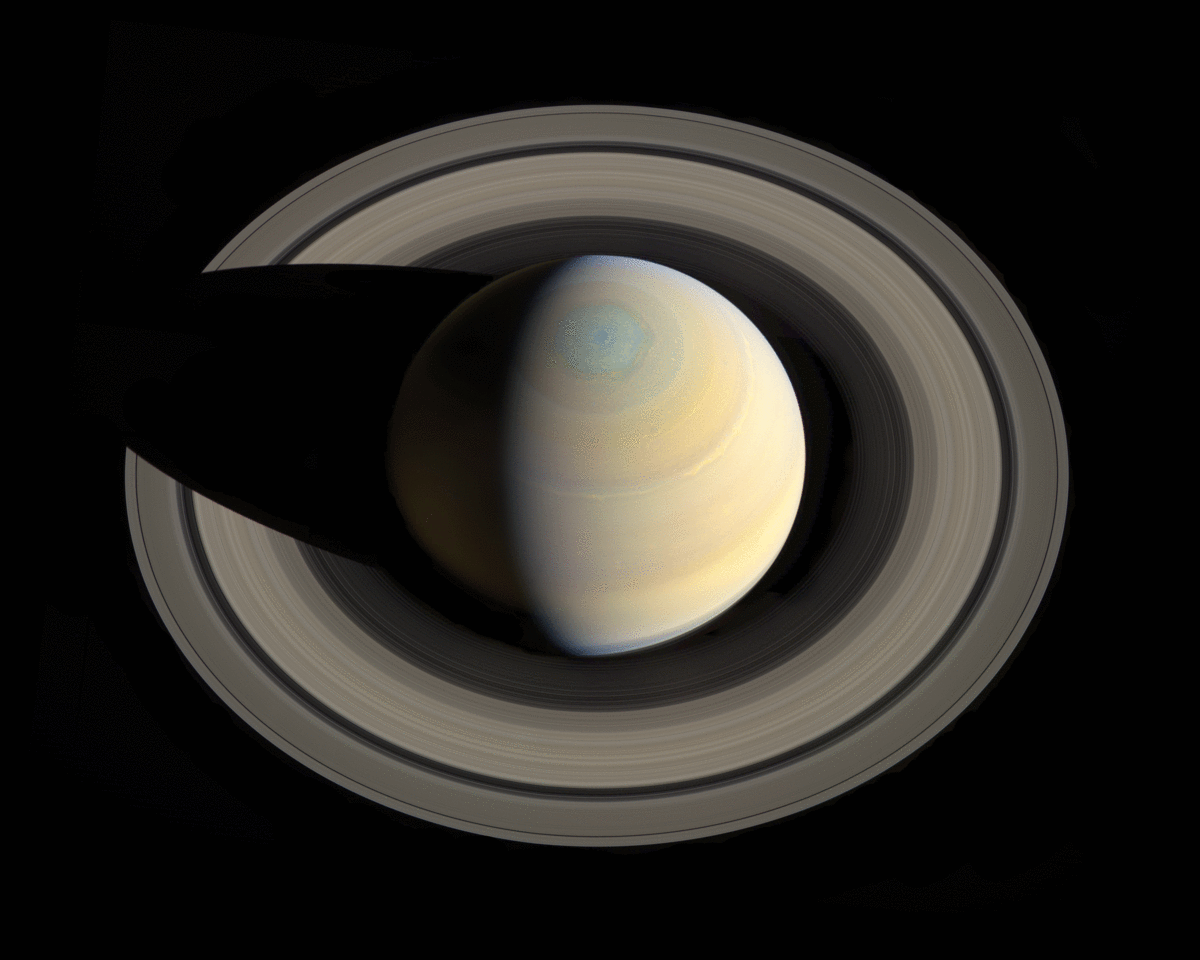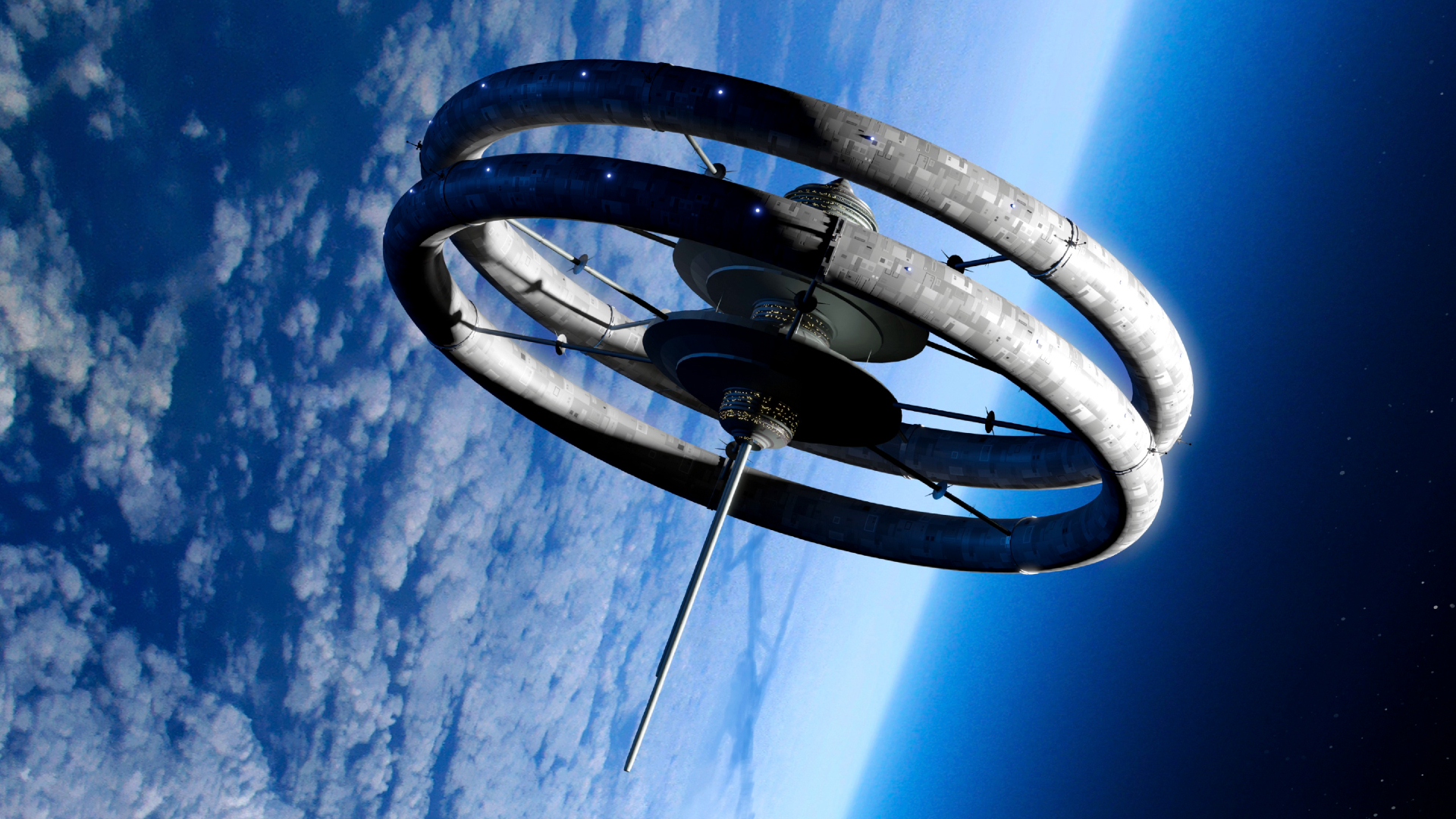Saturn's rings are disappearing. The James Webb Space Telescope may reveal how much time they have left.
Some of the world's most powerful observatories are poised to study the "ring rain" phenomenon.
Saturn's rings are disappearing, and we don't know how much longer they will be around.
Astronomers have known since the 1980s that Saturn's icy innermost rings are steadily eroding onto its upper atmosphere. The downpour is happening at such a high rate that an Olympic-sized swimming pool of water rains on the gas giant daily. However, how quickly the iconic ring system is shrinking — which determines when it will vanish — continues to be an open question.
Luckily, NASA's mighty James Webb Space Telescope (JWST or Webb), whose powerful instruments have so far peered at faraway galaxies from the early universe, will soon investigate this intriguing phenomenon found much closer to home.
"We're still trying to figure out exactly how fast they are eroding," James O'Donoghue, a planetary scientist at the Japan Aerospace Exploration Agency who will lead the new effort to pin down how long Saturn's rings will last, said in a statement published Monday (April 17). "Currently, research suggests the rings will only be part of Saturn for another few hundred million years."
Related: Saturn: Everything you need to know about the sixth planet from the sun
To better estimate the lifetime of Saturn's iconic rings, JWST and the Keck Observatory in Hawaii will be part of a long-term observation campaign to study the planet. The telescopes will help monitor how the "ring rain" phenomenon fluctuates during one full season on the gas giant, which lasts about seven Earth-years thanks to its orbit far away from the sun.
Astronomers expect interesting data from the campaign, as previous research showed that huge amounts of ring material is constantly dropping onto Saturn. For example, data sent home from NASA's Cassini spacecraft — which cruised right through the gap between Saturn and its rings 22 times during its death dive into the planet in 2017 — had revealed that somewhere between 880 pounds (400 kg) and 6,000 pounds (2,800 kg) of icy rain is flowing onto the planet every second and heating its upper atmosphere.
Breaking space news, the latest updates on rocket launches, skywatching events and more!
At this rate, the rings might vanish in about 300 million years. Although that may seem like a long time away, the deluge is leading the symbolic ring system to "a relatively quick death" in cosmic timescales. But the rate at which the ring material is raining onto the planet is still largely uncertain; the rings could disappear as quickly as 100 million years, or they might hang around for 1.1 billion years, astronomers say.
"Right now we only have one very wide estimate," O'Donoghue told Space.com on Wednesday (April 26). "We want to make more observations which narrow down this influx range."
According to the current research, space rocks and the sun's radiation slightly disturb the ring particles and give them an electrical charge such that they bind to the gas giant's magnetic field lines. Saturn's gravity then pulls the icy particles in, which are guided by the magnetic fields to flow into the planet's upper atmosphere, but not always at the same pace.
As Saturn goes around the sun in its 29.5-year orbit, it shifts toward and away from the sun, and its rings do the same. This tilt dictates how much the sun's radiation affects the ring system's innermost layers — where much of the icy rain is being triggered — and may also play a role in determining how much material is dropping onto Saturn, astronomers say.
"We suspect that when the rings are edge-on with the sun, the ring rain will slow down," O'Donoghue told Space.com. "And that when they are tilted to face the sun, the ring rain influx will increase."
So his team will use the Webb and the Hawaiian Keck observatories to measure emissions sprouting from a specific hydrogen molecule in Saturn's upper atmosphere. Measurements of this molecule spike when a small amount of material from Saturn's icy rings tumbles down into its atmosphere, but it dwindles during abundant ring rain, O'Donoghue told Space.com. Monitoring these shifts in these hydrogen emissions throughout one complete season on Saturn could help the team nail down just how much ring material must be raining on the planet.
"The instrument on Keck we have used for this before has been upgraded, and we've never used JWST for this before," he said. "So we'll be able to estimate the ring influx better than ever before."
While the new research will help with forecasting the fate of the rings, astronomers studying the Saturnian world continue the decades-old debate about how and when the planet's rings were born in the first place. Various models had shown that the rings had been a permanent structure around Saturn since 4.5 billion years ago — when the solar system itself was forming, but data from the Cassini spacecraft painted a more youthful picture, aging them at just 10 million to 100 million years old.
The discrepancy arose because older rings are often darker, but Cassini had captured Saturn's rings to be bright, hinting at their youth. In 2019, astronomers who revisited the debate suggested that the heavy ring rain may be responsible for the rings appearing young, circling back to the original notion that the rings are as old as the solar system after all.
"I think it would be fascinating if the life time of the rings was only 100 million years or so and that their age was billions of years," O'Donoghue told Space.com. "Since it means we evolved just in time to see them before they vanished."
Follow Sharmila Kuthunur on Twitter @Sharmilakg. Follow us @Spacedotcom, or on Facebook and Instagram.

Sharmila Kuthunur is an independent space journalist based in Bengaluru, India. Her work has also appeared in Scientific American, Science, Astronomy and Live Science, among other publications. She holds a master's degree in journalism from Northeastern University in Boston.


